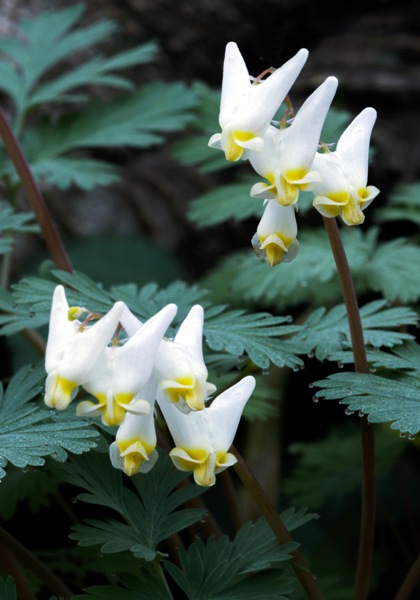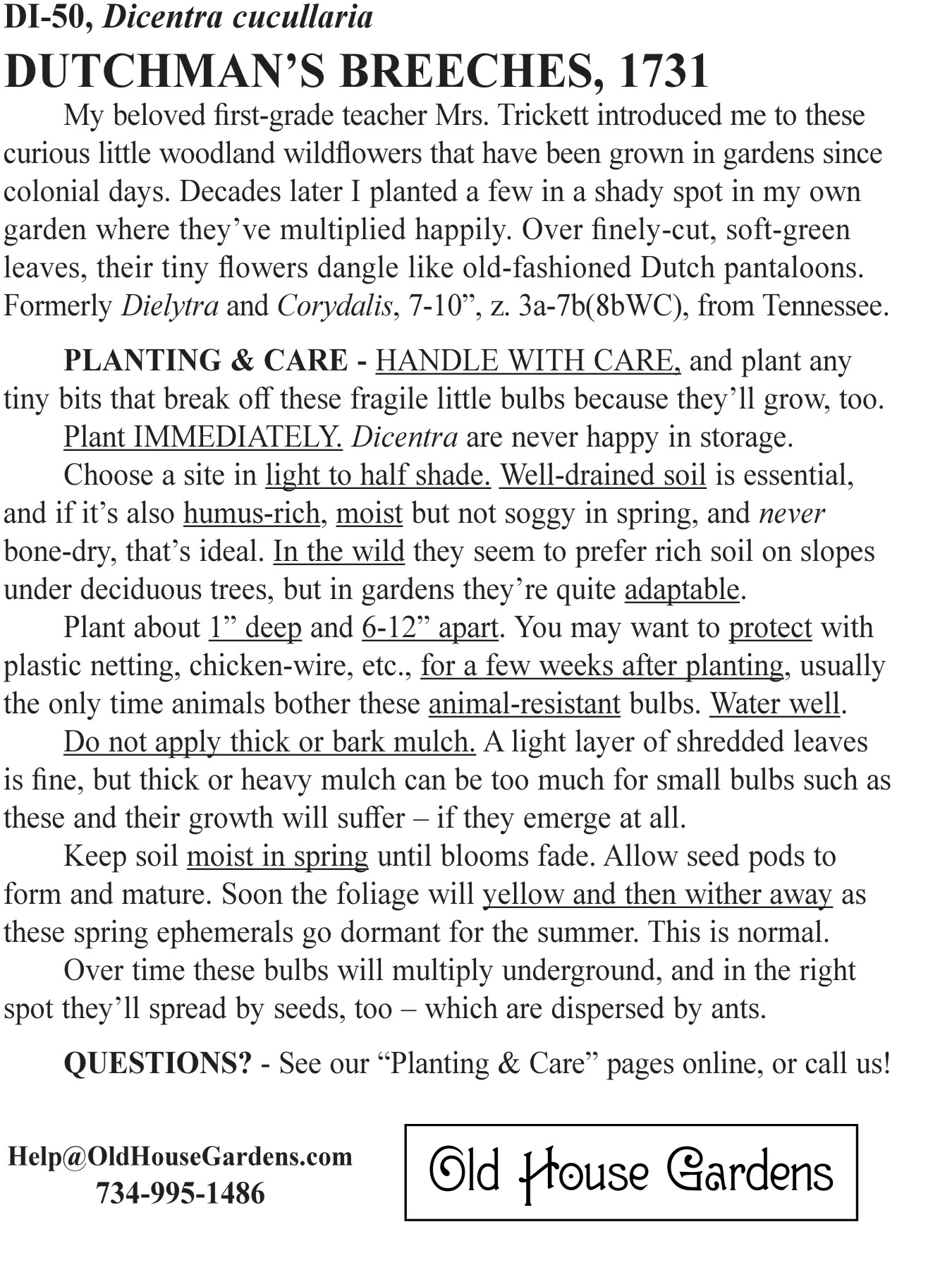|
|

 
|
|
These curious little woodland wildflowers are native throughout eastern North America and the Columbia Basis and have been grown in gardens since colonial days. They bloom in early spring, providing much-needed nectar for bumblebees emerging then, and since their seeds are distributed by ants they increase and spread naturally. Over finely-cut, soft green leaves, their flowers dangle like old-fashioned Dutch pantaloons, charming all who see them. Formerly Dielytra and Corydalis, 7-10”, zones 3a-7b(8bWC), nursery-grown for us in Tennessee. |
|
SUB TYPE American, wildflower, native, LittleBulbs ZONES 3a-7b(8bWC) HEIGHT 7-10” BLOOM SEASONS spring SOURCE America, Tennessee LIGHT light shade |
PLANTING & CAREHandle these fragile little bulbs with care, and plant any tiny bits that break off because they’ll grow, too. Plant ASAP when they arrive in October. Dicentra are never happy in storage. Choose a site in light to half shade. Well-drained soil is essential, and if it’s also humus-rich, moist but not soggy in spring, and never bone-dry, that’s ideal. In the wild they seem to prefer rich soil on slopes under deciduous trees, but in gardens they’re quite adaptable. Plant about 1” deep and 6-12” apart. You may want to protect with plastic netting, chicken-wire, etc., for a few weeks after planting, usually the only time animals bother these animal-resistant bulbs. Water well. Do not apply thick or bark mulch. A light layer of shredded leaves is fine, but thick or heavy mulch can be too much for small bulbs such as these and their growth will suffer – if they emerge at all. Keep soil moist in spring until blooms fade. Allow seed pods to form and mature. Soon the foliage will yellow and then wither away as these spring ephemerals go dormant for the summer. This is normal. Over time these bulbs will multiply underground, and in the right spot they’ll spread by seeds, too, which are dispersed by ants. |

|
SPRING
|
· |
SUMMER
|
· |
FALL
|
· |
LEARN MORE
|
· |
ORDERING
|

|










